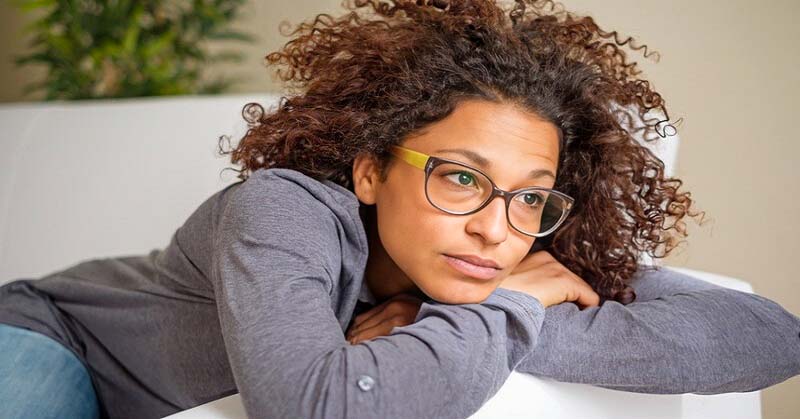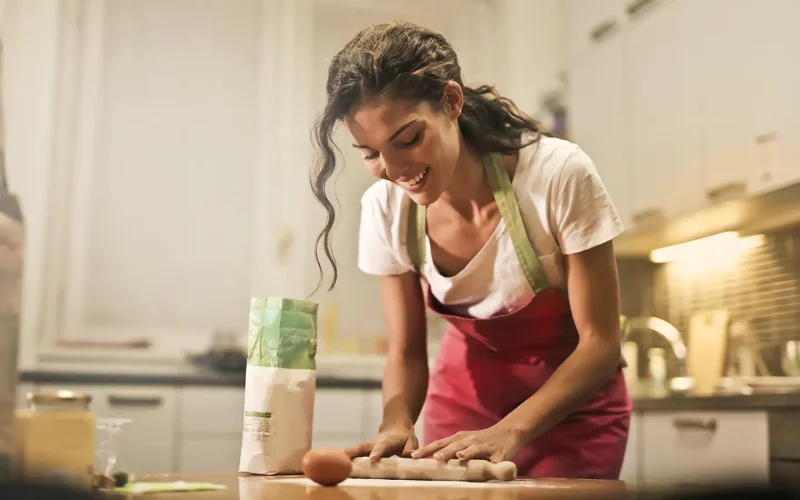

What is wellness?
Wellness is different things to different people, and for good reason.
Wellness is a holistic conversation. It involves six different dimensions: emotional, occupational, physical, social, intellectual, and spiritual.
Many definitions of wellness also consider it to be something we actively engage in. Wellness is not simply a state of being, but the pursuit of health in all these areas. When we practice healthy habits on a regular basis we’re pursuing wellness. These include emotional, physical, social, mental, spiritual, and financial habits. As well as those in our career.
How has wellness been affected by COVID-19?

The business of wellness is one of the most profitable in the world, generating over $4.5 trillion per year. After all, who doesn’t want to be well? However, most of the market associated with wellness, wellness classes, and wellness products fell flat during the pandemic. Suddenly, there were no gatherings, spa days, or high-end workout classes.
COVID disrupted millions of routines. The at-home workforce increased from 20% to 70% overnight. This eliminated commutes and disrupted sleep routines. Homes became classrooms, gyms, yoga studios, and home offices. Date nights happened on the sofa, and happy hours went virtual.
But the COVID-19 pandemic fueled a wellness revolution. Many of us had to review our understanding of wellness and find creative ways to achieve it in the absence of our usual haunts. With unlimited time at home, we were granted the opportunity to reflect on what was important to us. We looked for new ways to support our mental and physical well-being, and develop new habits that are now lasting as we create the “new normal.”
Our 2021-2022 wellness trends are a reflection of this new normal — and of our re-examined priorities. Vaccinations are on the rise, but people are understandably apprehensive about gathering en masse just yet. The areas where we’ve put our collective focus shed some light on the strangeness — and the trauma — of the past year.
The 22 most popular wellness trends for you to try

1. Touchless spas
Missing the spa, but not ready to be in close quarters with anyone yet? Touchless spas are on the rise. They provide services like no-touch facials, relaxation pods, and dry hydrotherapy massages. The beauty industry is rethinking the in-person experience. Professionals are striving to accommodate fewer points of contact and social distancing.
2. Virtual fitness
Virtual fitness classes were already gaining in popularity pre-COVID. This made them well-positioned to take advantage of the need to stay fit while apart. Virtual studios have popped up, offering everything from spin class experiences (thanks, Peloton!) to remote yoga retreats. Virtual fitness classes provide access to a community and real-time or asynchronous instruction. They’re often affordable and always convenient.
3. Immune health
Not surprisingly, living through a global health crisis has made people ultra-aware of their immune systems. So-called “immune boosters” were always popular, but a new understanding of how the immune system works has led to a rise in immune balancers. The idea is that the immune system can’t be boosted, but simply optimized to work as effectively as possible. Incidentally, sales of elderberry have skyrocketed. Elderberry and other superfood immune products are now almost impossible to find.
4. Breathwork
Deep breathing is simple, free, and easy to take anywhere. Both research and anecdotal experience emphasize the importance of connecting to your breath. while breathwork and mindfulness are powerful ways to reduce stress. In a world of endless Zoom meetings and chronic anxiety, it’s no wonder that people are taking a deep breath to pull themselves out of their heads and back into the moment.
5. Mindful eating
Time spent at home — and near the refrigerator — has led some to gain weight, affectionately called the COVID-15. Some of us have even taken greater responsibility than others in supporting our neighborhood restaurants. Although mindful eating was on everyone’s mind pre-pandemic, more time spent at home is making at-home meal time more frequent and more of a ritual.
6. Sleep hygiene
Shelter-in-place gave many of us several hours a day of commute-time back, which was a welcome change. But people thrive on routine, and not having to take kids to school or avoid rush hour madness affects our sleep schedules. Even if oversleeping for work isn’t as much of a concern, sleep health is important. Many of us are taking advantage of the extra time at home to cancel some of our sleep debt and put in place intentional nighttime routines. Endless days brought us a greater awareness of circadian rhythms, sleep quality, and the effects of sleep deprivation.
7. Upcycling food
In the United States, food insecurity is the worst that it has been in decades. With lines of newly out-of-work people at food pantries stretching up to a quarter of a mile long, people have gotten creative about using food scraps or alternatives to their normal grocery store staples. Some brands have gotten in on the trend, selling the imperfect and misshapen foods that would normally be discarded from farms and food processing plants.
8. Functional foods
This year, we’re not giving lazy food any attention — it’s got to be good and good for you. There’s a growing trend towards functional foods. Functional foods that are either naturally or artificially modified to have additional benefits. For example, think calcium added to orange juice or soluble fiber in oatmeal. It’s part of an overall trend towards more thoughtful nutrition choices.
9. Mental fitness
If there’s one good thing about the COVID-19 pandemic, it’s that it took the stigma off of mental health conversations. In fact, according to the New York Times, the defining feeling of 2021 was “blah.” While we’re all “not okay,” struggling with anxiety, depression, languish, and burnout isn’t quite as lonely as it once was. It’s now more acceptable and understandable to reach out for mental health support. This might include coaching, therapy, or even taking a mental health day from work.
10. Meditation apps
Anyone with a smartphone likely has one — or more — meditation apps installed. There is an endless variety of apps, with a plethora of cool features, and options in every price range. This makes meditation apps an easy and accessible way to practice mindfulness.
11. Self pleasure
Yep, we’re talking about masturbation. Since social distancing put a cramp in dating, self-pleasure has become a new way to release tension. It also boosts nitric oxide (feel-good chemicals), and safely keeps your sex life vibrant. The market is debuting new toys that promote a more mindful, healthy, and inclusive experience. Not to mention, female-owned companies producing toys designed by female researchers.
12. Virtual hangouts
All-day Zoom meetings may be getting tiring, but virtual hangouts are likely here to stay. After all, you didn’t spend all that time teaching your parents how to unmute themselves for nothing, did you? As a vaccinated workforce returns to the office, many social activities will likely continue to offer virtual options. Social events (bachelorette parties, family reunions, and weddings) are leveraging social media and streaming services. This allows those that are not able to travel, or who don’t yet feel comfortable, to still take part.
13. Outdoor activities
More time spent indoors — coupled with an (evidence-based) lower rate of transmission outdoors — makes fresh air more appealing. Dining al fresco and working out outside are gaining popularity. This is particularly true in regions that are warming up for spring and summer, providing a reprieve from winter and lockdowns. Outdoor hobbies like gardening, tennis, sailing, and basketball are seeing more interest. They a) involve sunshine and b) don’t involve a screen.
14. Cozy and casual chic
Business up top, but party off-screen. Working from home lends itself to a more relaxed office dress code. With offices reopening on a hybrid model (for the ones that are planning to reopen at all), fewer workers will feel the need to dress up for every meeting. Stores are featuring hybrid work-leisure gear. This includes chic fitted leggings, comfortable button-down shirts, and relaxed-but-trendy dresses. High heels and Windsor knots may never recover.
15. Tracking stress
Stress is at new highs and affecting a record amount of the population. With this, people are becoming more and more interested in how different types of stress impact all aspects of their health. The fitness and stress trackers now document physiological responses to determine how stressed out an individual is and when spikes occur. This provides individuals new insight into their daily routines.
16. Digital healthcare
You may have struggled to get an appointment with a specialist in the past or groaned at the commute to the “good doctor’s office.” But, with virtual conferencing and meeting technology more popular than ever, doctors are more willing to meet with you virtually. You can even book virtual sessions with personal trainers, nutritionists, physical therapists, mental health professionals, coaches, and sleep specialists. Just double-check that it’s actually your therapist you’re texting before you hit send.
17. Adaptogens
The newest addition to the line of superfoods are adaptogens. Known for their stress-busting properties, adaptogens like ashwagandha and rhodiola, help augment immunity, impact the release of cortisol in the body, and improve your resistance to the physical and emotional effects of stress. Although they’re enjoying their time in the spotlight, adaptogens were first identified by a researcher back in 1947.
18. Cooking
Even those who have no aptitude in the kitchen are cooking more lately. Meal kits are simplifying the art of cooking. But for those who prefer to source their own ingredients, homes are turning into herb gardens, kombucha breweries, and sourdough bakeries. What started as a reaction to scarcity on the shelves has turned into a nutrition-filled hobby.
19. Gentler workouts
Uber-competitive workouts are hard to maintain when you’re sweating in a living room full of Legos. Absent the competitive environment and structure of a gym, many people are finding that they don’t want to “go-hard” like they once did. Workouts now double as stress relief, so mind-body exercises — particularly those you can do at home with less equipment — are on the rise. Online yoga, mat Pilates, barre, jogging, bodyweight exercises, and stretching are becoming part of the routine for the couch-fitness crowd.
20. Decluttering and decorating
Heightened levels of introspection and the need to convert homes into multi-functional sanctuaries have turned spring cleaning into a year-round phenomenon. Decluttering has always been a buzzword, but creating space has been therapeutic as well as practical. Unable to visit their normal favorite places, people have been creative about incorporating what they miss about the world into their homes. DIY home projects have provided a creative outlet as well as a way to make lockdown a bit more cheerful.
21. Travel
Remote work allows record numbers of employees to finally leave expensive urban centers and work from wherever they like. For some, this means traveling to sightsee in new locations. For others, this means relocating to a more affordable place with more space. To recoup some of the lost revenue from tourism, many countries are opening co-working spaces. Some are even offering “digital nomad visas” to attract employees.
22. Financial wellness
On both a macro and micro-level, conversations about money have dominated the last year. People struggled with unemployment, uncertainty, and balancing their needs to make money with concerns about their health. The government tried to come up with effective ways to support them while managing the reality of a situation without precedent.
These conversations led to a growing awareness of what needs to happen to provide people with a safety net. It also spurred discussion around everyday individuals caring for themselves, their families, and building their careers.
Although inspired by the pandemic, these health and wellness trends reflect long-term conversations and changes in society. When we look at where people are spending their money and putting their time, we get a good idea of what their priorities are — and what their personal definition of wellness is.









You must be logged in to post a comment Login